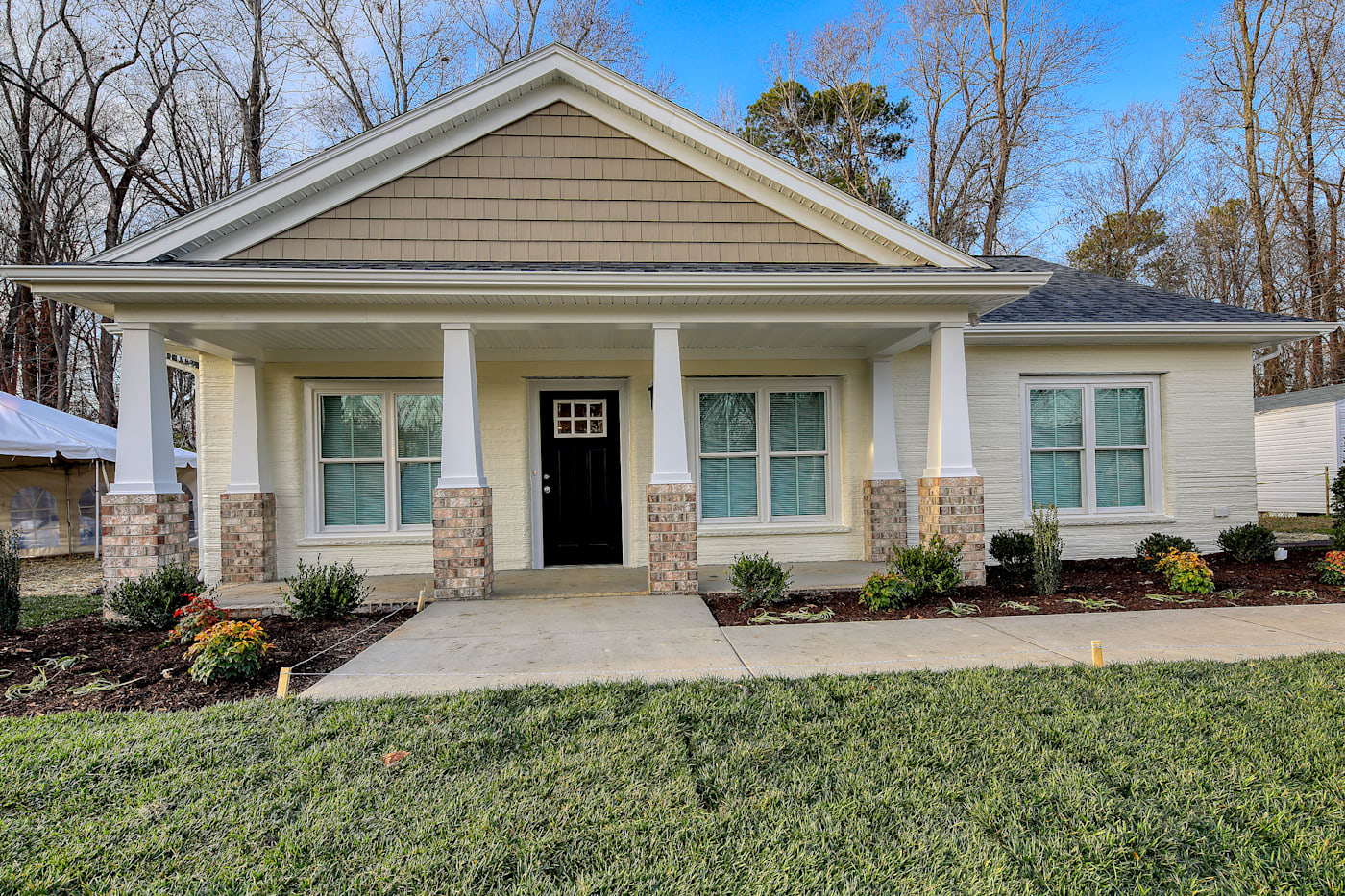- Home
- Inspiration
- Lay it Forward
- Q&A with Craig Meadows on Habitat for Humanity's 3D House
Q&A with Craig Meadows on Habitat for Humanity's 3D House
With the completion of the country’s first 3D-printed home, Habitat for Humanity and Alquist 3D are ushering in the potential future of construction and affordable housing. The Williamsburg, Virginia home was completed September 8th of last year and its first residents received their keys in December.
With headquarters less than an hour away in Richmond, LL Flooring took the opportunity to help our neighbors and get involved in the project build. We spoke with Chief Construction Officer Craig Meadows to learn more about what went into the design and production of the home, and his hopes for this technology moving forward.

LL Flooring: Tell me a bit about this 3D house.
Craig: Well it was brought to our attention in early 2021 that this process was available, and we might be able to get involved in it. I’d never thought about 3D printing a house before, but I’ve spent my career as a Class-A builder embracing newer technologies, so I was excited to be involved.
Had we been unhindered and everything went well weather-wise, essentially it could’ve been finished in about three days, which is a huge time-saver. There are also savings on material costs, and because the wall has such an insulated property to it, it creates a very energy-efficient and sustainable home that will save the homeowner money on bills for years to come.

What was the building process like?
The exterior façade is 3D-printed, but everything inside, like the dividing walls and finishes, were done using traditional materials to make it feel like a typical home. Because this is such a new technology for us, we had to do some R&D test runs for the first couple weeks to make sure we understood the process, because it can be a pretty quick operation once printing is underway. Once we started with the first printed layers on August 16th, it took just 28 hours to complete the exterior walls of the home.
The device is basically a giant inkjet printer, except it spits out concrete instead of paper. The printed material is a form of compressed concrete, printed in strips 2 inches wide x ¾ inch tall that are layered atop one another. We designed the walls similarly to a hollow cinder block, with the inner and outer layers reinforced with wire and filled with insulation to create an exterior wall that’s 8 inches deep.
Because the tech is still in its infancy in the construction world, there were questions as to how it would print in hot weather, but we were able to achieve some of the smoothest texture to date compared to others you’ll see. There are 160 layers of concrete laid down, and in peak performance, a layer can be done in seven minutes. If you’re uninterrupted and able to run 24 hours a day, that gives you an idea of how quick you can print a home.
How does the process of designing and building a 3D house differ from a regular house?
I’ve got experience in ICF (insulating concrete forms) construction, so it was relatively easy to design the house, but the construction had a learning curve to implement some of the new methods.
There’s a lot of interest in Habitat embracing the technology, but while we still continue to develop our relationship with 3D tech, we won’t abandon our standard construction practices right away. 3D tech is still in its infancy in the United States, so everybody that’s doing that is in the learning stages. I’m thankful that our project went very smoothly, and I feel like we were able to deliver a product that was free of the known hiccups that other 3D printing programs have faced with materials, like controlling the concrete and achieving consistency of the texture.


What’s your favorite aspect of the home’s design?
I really enjoyed embracing a new technology – I’ve been a class-A builder nearly my entire adult life, and I think it’s just really cool to be able to tell my kids that we did something this special and cutting edge. it’s certainly notable to be amongst the first entities in the nation to say we were able to complete and build with 3D tech and put a homeowner in it.
Read about the 3D-printed home on Habitat for Humanity’s website.
Follow @LLFlooringOfficial on Instagram and Facebook for more design and inspiration.


